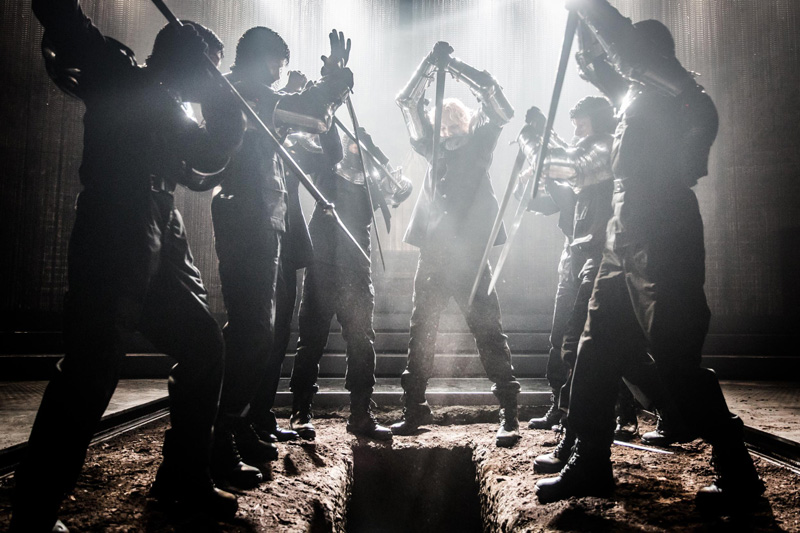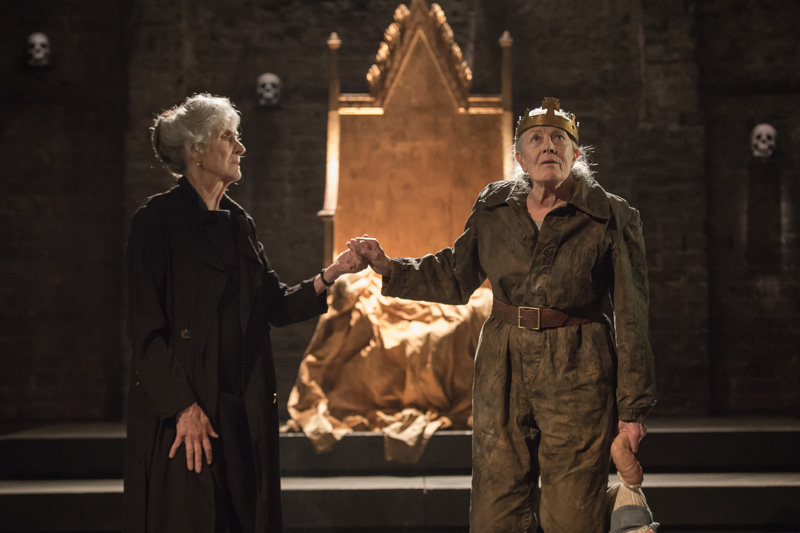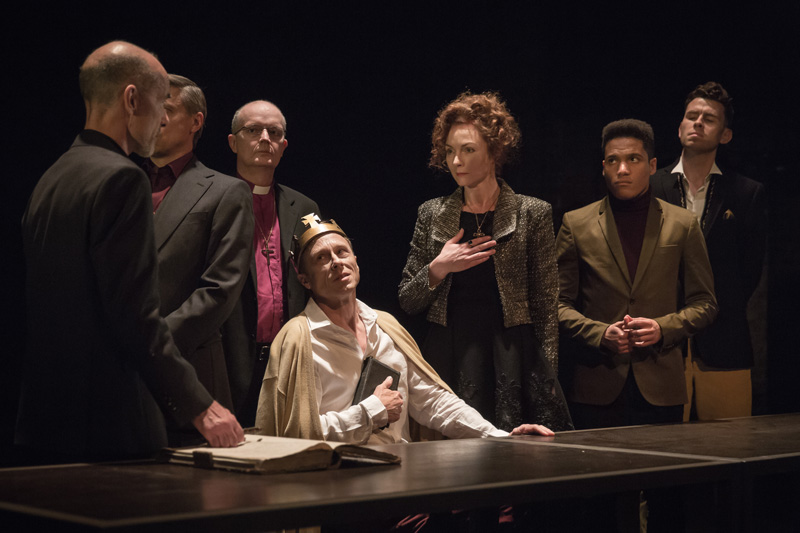★★★★½ Coming to Aussie cinemas, Vanessa Redgrave helps Ralph Fiennes disinter “The King in the Car Park”.
Almeida Theatre, London
August 1, 2016
Richard III is one of the best known of Shakespeare’s history plays: well there’s nothing like a ruthless killer to keep the ratings high. But Shakespeare probably did not view its writing as a pot boiling exercise, one misplaced phrase and the spilt gore could easily have been his own, so crucial was it that the story told preserved the Tudor narrative of events. The play’s ultimately victorious character, Henry Tudor, was Queen Elizabeth I’s grandfather, too short a lineage to permit any doubt about the story’s veracity and the Tudor claim to the throne of England.
It is believed that Shakespeare actually wrote Richard III as a star vehicle for his friend, the actor Richard Burbage, and the role has attracted star actors ever since. The star in this instance is Ralph Fiennes whose work is celebrated worldwide,mainly thanks to his extensive catalogue of film roles. Most familiar to Australians is perhaps Oscar and Lucinda with Cate Blanchet, and his role in the Oscar winning The English Patient.
In addition to its star, this production is built around the fascinating discovery in 2013 of King Richard’s skeleton, buried under what was a car park but would in 1485 have been the church of the Grey Friars. This discovery revealed that the description of Richard as being hunchbacked was actually true and not merely a literary hatchet job to emphasis his malignity to an ignorant population who viewed handicap as a sign of God’s displeasure. The production used the discovery of the truth about Richard to provide insight into the possible effects upon his psychological development, which feelings of rejection and an upbringing devoid of love could have had. Lines spoken by his mother, the Duchess of York, and by Richard himself do support this interpretation.

This modern insight was not however the only anachronism in a production, which employed modern dress as well as much of the paraphernalia of the 21st century. One moment the play’s words tell us we are in a world of battles fought with halberds and kings who can order a subject to instant execution, while in the next Shakespeare’s 400-year-old language was being read aloud by one character to another from the screen of a mobile phone, as if it were a text message. Was it all confusing – not one bit. At moments it was certainly amusing but never inappropriately so and overwhelmingly the result was to shock us into the realisation that despite the centuries that have passed, sadly, power still corrupts and some aspects of human behaviour do not change.
As we entered the theatre there were, surrounding an onstage grave, the archaeologists silently absorbed in the final stage of disinterring the body in the car park. When the body had been removed and the house lights dimmed we were confronted by Richard himself, standing on the front edge of the stage talking straight at us, a man of twisted body and chillingly commanding presence. Beginning with that first famous speech Fiennes created a character not only of malign intent but also with a terrifying ability to manipulate others to his will. That Shakespeare intended the audience to be amongst those manipulated is clear.
Richard is given one third of all the lines in the play so to whom is he speaking – either himself or the audience – and this production chose the audience. It seemed truthful, for as Shakespeare writes him Richard is a star performer who can mesmerise his audience into believing black is indeed white. It is by this means that Shakespeare makes us understand how Richard’s allies found themselves embroiled in the horrors of his pogrom. Fiennes caught the actor in Richard perfectly, feeding off his own success and faltering only when the performance is questioned by its audience. These are characteristics seen in modern tyrants and you were aware of this as you became part of the audience not only to his horrifying plans but also to his reasoning. Drawing us into his twisted mind’s rational we became accessories to his crimes. It was an unsettling experience.

Given the subject matter you might expect the remainder of the cast to be predominantly male and in terms of numbers they are: 17 men to 4 women. Yet of the characters who drive the drama almost all are women. The exception is Buckingham, Richard’s cousin, who becomes his advisor in the plot to gain him the crown. Finbar Lynch in an unobtrusive grey suit and inscrutable expression conveyed perfectly the ambivalence necessary to survive life with an exterminator. The parallels with those who have found themselves caught up by tyrants of modern times were easily brought to mind and, again, the insight was uncomfortable.
The four female characters are those who consistently challenge Richard’s actions: Ann who he wishes to marry, Queen Margaret the old widow of slaughtered Henry VI, the Duchess of York his mother, and Queen Elizabeth the wife, soon widow, of his brother Edward IV and mother of the two little Princes killed in the Tower.
As the ferocious Margaret, Vanessa Redgrave spoke throughout in a throaty whisper, it was a master stroke. You could feel the silence as we lent forward to catch every word of what this extraordinary old woman was saying. Dressed in a beaten up army jumpsuit (the historical Margaret did lead a battle charge in her youth), clutching a disintegrating baby doll and uttering both truth and curses she was someone you were compelled to listen to.

Queen Elizabeth was by all historical accounts an arrogant, ambitious, sometimes cruel woman and so Aislin McGuckin played her, until that moment when she learns her young sons are dead. So compellingly honest was her performance that I found myself wondering then if her tears for her sons were genuine. In this large cast all the performances were in fact worthy of note but it is a tribute to Rupert Goold’s direction that it is hard to reflect on these individually, so true was the world they jointly created and so overwhelming is Richard’s presence.
Goold has given us a cohesive production in which every element supported the creation of a modern world in which actions, such as a king’s demand for the immediate liquidation of a subject, are made to seem terrifying but believable. There were too many contributors in too many mediums to mention all here, but Limelight readers may be particularly interested in the work of composer Adam Cork. He is the composer of the musical London Road and winner of both Olivier and Tony awards for his theatre scores. Here he was in charge of both music and sound, producing a powerfully disturbing soundscape.
This is memorable production of a great play written in the 16th century and powerfully translated to the 21st. How will it translate to film? You must attend the Australian showings to decide, but my guess is that it will be every bit as riveting as it was onstage, perhaps even more so.
Almeida Theatre’s Richard III screens in Australian cinemas, including Palace and Dendy Cinemas, September 10-11











Comments
Log in to join the conversation.